
Task using place value.
- Subject:
- Mathematics
- Material Type:
- Activity/Lab
- Assessment
- Homework/Assignment
- Date Added:
- 08/30/2018

Task using place value.
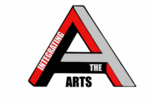
This resource was created by Heidi Meyers, in collaboration with Dawn DeTurk, Hannah Blomstedt, and Julie Albrecht, as part of ESU2's Integrating the Arts project. This project is a four year initiative focused on integrating arts into the core curriculum through teacher education, practice, and coaching.
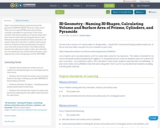
https://www.educreations.com/lesson/view/3d-geometry/29389361/
NOTE: These are video notes! They are to be used AFTER instruction of these concepts or possibly as a precursor to the actual activities.
The link provided is a 27 minute video that I have used for notes with my 6th grade honors class. Obviously students shouldn't sit down and watch a 27 minute video all at once but it could be used in a part series as students are discovering these concepts in your class with actual activities.
I love Educreations because it's really easy to make a video, get a link that you can embed into any online classroom space, and a large portion of the storage space is free! YAY FREE!

Short Description:
An open textbook created to improve both teaching and learning vital concepts and techniques in multivariable calculus, one of the fundamental courses across the undergraduate curriculum in science and engineering. The goals of this resource are to help learners develop their geometric intuition about abstract and complex mathematical concepts (e.g., partial derivatives, multiple integrals, vector fields), and train them to make connections between concepts visually (e.g., connecting “vectors” in mathematics with “magnitude” and “direction” in physics) in order to more fully understand engineering, physics and mathematical problems (e.g., differential equations) in their subsequent STEM coursework.
Word Count: 7075
(Note: This resource's metadata has been created automatically by reformatting and/or combining the information that the author initially provided as part of a bulk import process.)
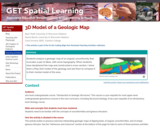
Play-Doh model of a geologic map
Provenance: Carol Ormand Ph.D., Carleton College
Reuse: This item is offered under a Creative Commons Attribution-NonCommercial-ShareAlike license http://creativecommons.org/licenses/by-nc-sa/3.0/ You may reuse this item for non-commercial purposes as long as you provide attribution and offer any derivative works under a similar license.
Students analyze a geologic map of an angular unconformity that truncates a pair of dikes, with some topography. When students have deciphered the map and constructed a cross-section, I show them a Play-Doh model of the geology and ask them to compare it to their mental model of the area.
(Note: this resource was added to OER Commons as part of a batch upload of over 2,200 records. If you notice an issue with the quality of the metadata, please let us know by using the 'report' button and we will flag it for consideration.)
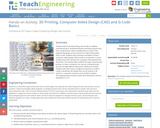
Students learn how 3D printing, also known as additive manufacturing, is revolutionizing the manufacturing process. First, students learn what considerations to make in the engineering design process to print an object with quality and to scale. Students learn the basic principles of how a computer-aided design (CAD) model is converted to a series of data points then turned into a program that operates the 3D printer. The activity takes students through a step-by-step process on how a computer can control a manufacturing process through defined data points. Within this activity, students also learn how to program using basic G-code to create a wireframe 3D shapes that can be read by a 3D printer or computer numerical control (CNC) machine.

A Beginner’s Guide for Teachers
Short Description:
This book is for math teachers with little to no experience with 3D printing who would like to incorporate it into their classroom.
Long Description:
This book is for math teachers with little to no experience with 3D printing who would like to incorporate it into their classroom. Included are reasons why 3D printing is useful in a classroom, logistics of how 3D printing works, example activities for all grade levels, and ways for teachers to think of their own activities.
Word Count: 17468
(Note: This resource's metadata has been created automatically as part of a bulk import process by reformatting and/or combining the information that the author initially provided. As a result, there may be errors in formatting.)
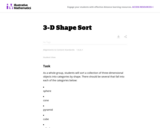
As a whole group, students will sort a collection of three-dimensional objects into categories by shape.
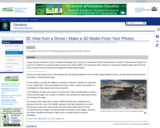
Using cameras mounted to drones, students will design and construct an experiment to take enough photos to make a 3-dimensional image of an outcrop or landform in a process called structure from motion (SfM). This activity has both a hands-on component (collecting data with the drone) and a computer-based component (creating the 3-dimensional model).___________________Drones can take photos that can be analyzed later. By planning ahead to have enough overlap between photos, you take those individual photos and make a 3-dimensional image!In this activity, you guide the students to identify an outcrop or landform to study later or over repeat visits. They go through the process to plan, conduct, and analyze an investigation to help answer their science question.The Challenge: Design and conduct an experiment to take enough photos to make a 3-dimensional image of an outcrop or landform, then analyze the image and interpret the resulting 3-d image.For instance they might wish to study a hillside that has been changed from a previous forest fire. How is the hillside starting to shift after rainstorms or snows? Monitoring an area over many months can lead to discoveries about how the erosional processes happen and also provide homeowners, park rangers, planners, and others valuable information to take action to stabilize areas to prevent landslides.
(Note: this resource was added to OER Commons as part of a batch upload of over 2,200 records. If you notice an issue with the quality of the metadata, please let us know by using the 'report' button and we will flag it for consideration.)
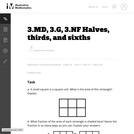
This is a task from the Illustrative Mathematics website that is one part of a complete illustration of the standard to which it is aligned. Each task has at least one solution and some commentary that addresses important asects of the task and its potential use. Here are the first few lines of the commentary for this task: A small square is a square unit. What is the area of this rectangle? Explain. What fraction of the area of each rectangle is shaded blue? Name the frac...
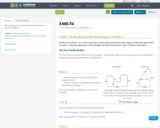
This modeling task is focused on finding rectilinear area of two figures.
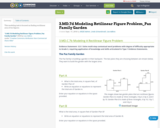
This modeling task is focused on finding rectilinear area of two figures.

This task is related to Sub Claim C: Elapsed Time. Students are adding and subtracting time intervals on a number line. Standard 3.MD.1
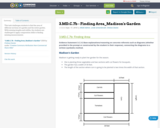
This task challenges students to find the area of different sections of a garden and the entire garden. With missing lengths and widths, the students are challenged to apply computation skills to finding missing measurements.

This flawed reasoning task addresses misconceptions with determining area.
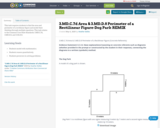
This task requires students to find the area and perimeter of a rectilinear figure and model their thinking through multiple equations. This task relates to the Common Core State Standards: 3.MD.C.7d, 3.MD.D.8, and 3.OA.D.8.

This task requires students to find the area of a rectilinear figure and model their thinking through multiple equations. This task relates to the Common Core State Standards: 3.MD.C.7d and 3.OA.D.8.
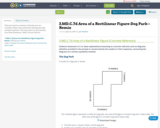
This task requires students to find the area of a rectilinear figure and model their thinking through multiple equations. This task relates to the Common Core State Standards: 3.MD.C.7d and 3.OA.D.8.

This is a concrete referent reasoning task for Grade 3. Students need to use the diagram to find the information to find the area of a rectilinear figure. This is a task that would be a good starting point for solving problems for this standard.
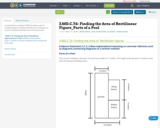
A task related to standard 3.MD.7d, additive area of rectilinear figures. Students find the area of the parts of a pool to ultimately find the area of the entire pool.